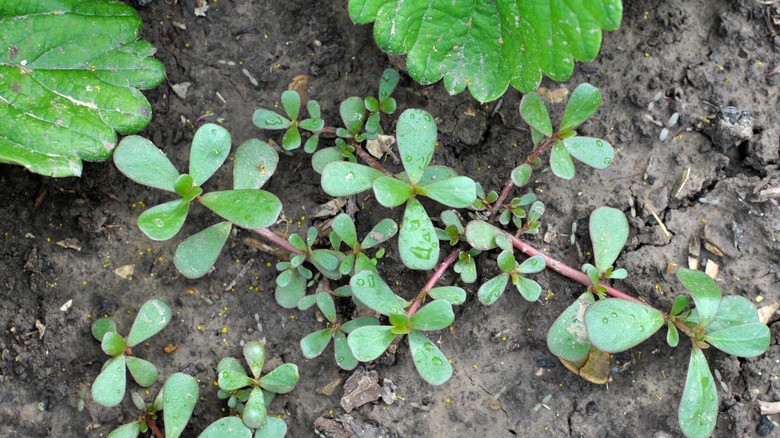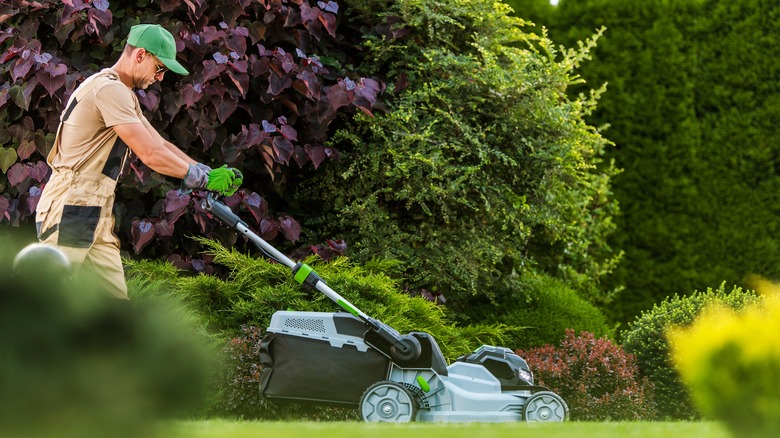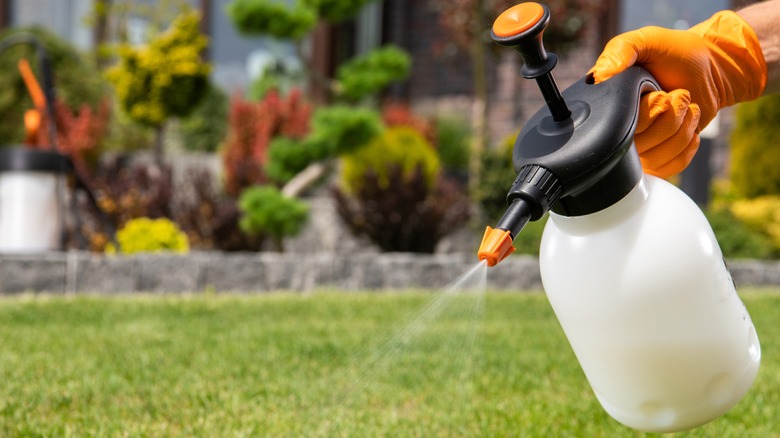The Best Way To Keep Fast-Growing Purslane Out Of Your Lawn And Garden
If you've recently spotted a low-growing plant with stems that seem to hug the ground as they spread, you might be dealing with purslane. This unassuming weed might not look like much of a threat at first glance, but don't be fooled — you need to understand what your lawn or garden is up against. Purslane is notorious for its fast germination and ability to outcompete other plants for water and nutrients, making it a significant nuisance for gardeners and lawn enthusiasts alike. The secret to keeping it under control is fostering a healthy, competitive environment where it has no room to thrive. A robust lawn or garden can naturally suppress the growth of purslane, reducing the need for more aggressive interventions. However, when the situation calls for it, you can employ several biological and chemical strategies to get rid of this weed or keep it in check.
But first things first: make sure you've correctly identified your green foe. Purslane can be identified by its smooth, reddish-brown stems that can reach as long as 12 inches. Sometimes, it prefers to keep a low profile, hugging the ground, but don't be surprised if you see it standing up tall. Once you're sure you're dealing with purslane, you can improve your gardening practices to prevent the weeds from taking over.
Cultural control methods
Cultural control methods focus on creating an environment where purslane cannot thrive. Begin with the basics: keep an eye out for any purslane seedlings and deal with them promptly. Purslane begins its growth cycle with the germination of seeds in the early days of spring, leading to a flowering period from June to November. If the infestation is minimal, you can manually remove the plant. Extract the entire root system to prevent regrowth. For more persistent patches, flaming or composting may be helpful to get rid of purslane. However, these methods should be applied with caution to avoid damaging desirable plants or turf. The change of seasons, particularly in late summer or fall, offers the perfect timing to fortify your green spaces by overseeding. This preemptive strike stops the purslane in its tracks before it even dreams of sprouting. Mulching is another ace up your sleeve. Once you choose the best mulch for your garden, you can use thick layers of plastic to effectively keep those pesky weeds in the dark, both literally and figuratively.
Of course, the cornerstone of your anti-purslane strategy is good, old-fashioned lawn care. Keep your turf trimmed to just the right height to encourage thick, healthy growth that can outcompete purslane and other invading weeds. Lastly, don't overlook the importance of cleanliness in your gardening tools. Make it a habit to clean your mowers and planters after they've been through infested areas. This simple step can stop purslane seeds from spreading.
Biological and chemical control methods
Sometimes, despite our best efforts with cultural tactics, purslane proves to be a stubborn opponent. That's when we need to bring in the reinforcements: biological and chemical controls. Take the purslane sawfly, for example. While the purslane sawfly can act like nature's own little gardener, nibbling away at purslane leaves and weakening the plant, it won't have much effect if the purslane infestation has already intensified.
Now, onto the heavy artillery: chemical controls. Sure, they can be quick and effective, knocking back the purslane before it knows what hit it. The University of California notes that preemergent herbicides, like dithiopyr and pendimethalin, are particularly good at stopping purslane seeds in their tracks. However, as the university puts it wisely, you need to use these chemicals sparingly. After all, your goal is to cultivate a healthy, vibrant garden or lawn that can stand up to invaders on its own. Leaning too heavily on chemicals can be like putting a bandage on a problem that needs stitches. So, while it's good to know you have these options in your garden shed, focusing on creating a robust, competitive environment for your lawn and garden will always be the best strategy in the long run.


